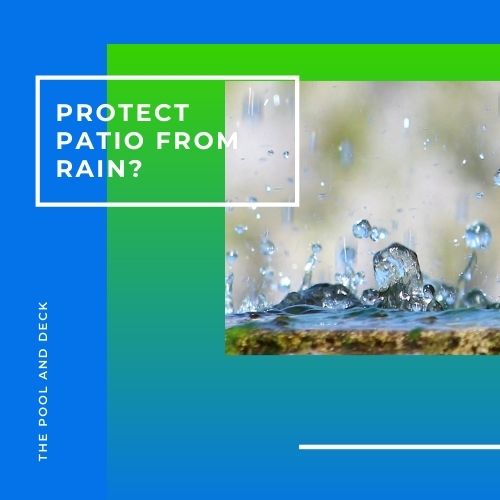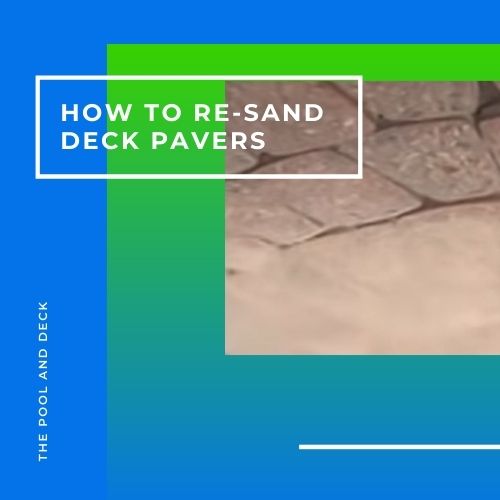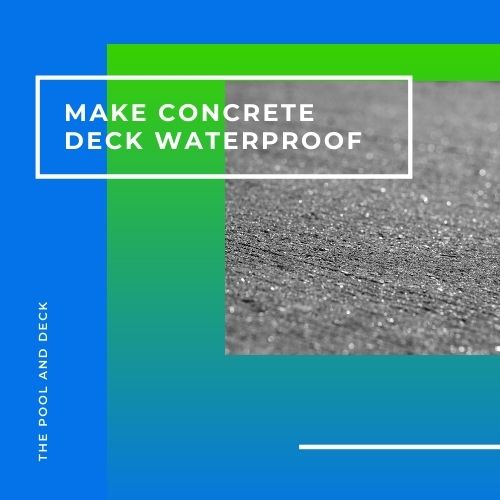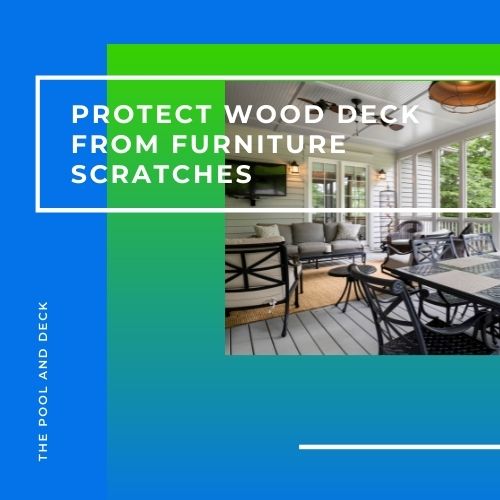How To Best Fix An Uneven Pool Deck?
As an Amazon Associate, I earn from qualifying purchases.
Table of Contents
How Do You Fix an Uneven Concrete Pool Deck?
Do you have a concrete pool deck that is no longer even? You are not alone. This is actually quite a common problem. As time passes, concrete pool decks can crack, sink in parts and become uneven. An uneven pool deck not only looks ugly, it also becomes a tripping hazard. So how do you fix an uneven concrete pool deck?
To fix an uneven concrete pool deck and depending on the extent of the problem you can use one of the following fixes:
- Concrete Pool Deck Resurfacing
- Concrete Pool Deck Mud Jacking
- Concrete Pool Deck Foam Lifting
- Concrete Pool Deck Replacement
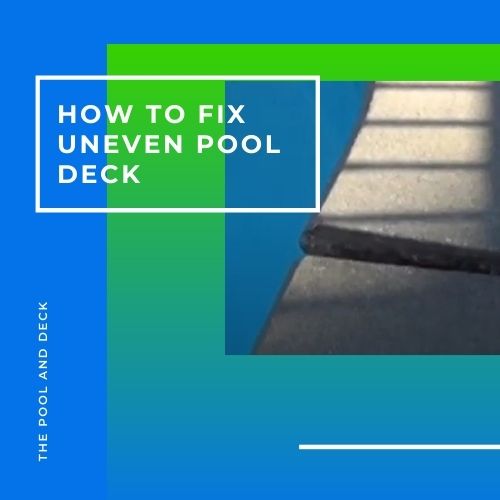
The work involved and therefore the cost will depend on the fix that you need.
Concrete Pool Deck Resurfacing will be the easiest and cheapest but will only be effective for filling out smaller concrete cracks. Resurfacing is also a superficial and temporary solution.
Concrete Pool Deck Mud Jacking or Concrete Pool Deck Foam Lifting use the same principle but different techniques and materials. They can be a long lasting solution provided they are done by a professional company with expertise & experience.
Concrete Pool Deck Replacement should be the solution of last resort. As the name suggests, the old deck will need to be torn away, and a new concrete deck will have to be poured.
The cost will be extremely high and your deck will be unusable for several weeks. You will also have to live through the noise & dust during the replacement process.
Before you decide which is the best fix for your uneven pool deck, you must understand why concrete cracks and what causes uneven concrete slabs on grade.
What Causes Uneven Concrete?
A poured concrete pool deck is essentially a slab on grade. Concrete slabs always crack due to stress caused by shrinkage during the curing process. Such concrete cracks, of course do not look pretty but they are harmless and have no adverse effect on the structural integrity of the slab
The shrinkage cracks in concrete slabs is a perfectly normal occurrence. They are also known as hairline cracks and are less than 1/16 th an inch wide. Shrinkage cracks can become visible as soon as the curing process begins.
The concrete pool deck can also be subjected to tensile stress due to ground movement below the slab. In spite of a well prepared and compacted base, the ground below the slab moves and settles over a period of time. Portions of the concrete pool deck can sink in a non uniform pattern. This can result in large cracks and an uneven pool deck.
Ground settlement under a concrete slab is usually the result of:
Poor Base Preparation & Compaction of Pool Backfill
The starting point of constructing an inground pool is digging a big hole in the ground; bigger than the final pool for sure. Once the pool is constructed, the pool contractor will fill up the remaining part of the hole. This is the pool backfill.
The pool backfill forms the base for some if not all of the poured concrete pool deck. How well the pool backfill was compacted will determine if and how the ground below the pool deck will settle.
Poor compaction can, obviously, result in an uneven pool deck, in years to come.
Change in Soil Moisture Content
Even if the compaction of the pool backfill and the pool deck base has been done as well as possible, there is no guarantee that the moisture content of the soil below the deck will not change over years.
The water table can move up or depending on a host of geological factors such as soil type, levels in surrounding water bodies, etc. That is just life!
Soil Erosion due to Rain or Plumbing Leaks
The soil below the deck, even a compacted base, can eroded by heavy rainfall or a plumbing leak. Trying to fix an uneven pool deck without first determining and fixing the leak will be very short lived and a complete waste of time & money.
Concrete Thickness & Reinforcement
The problem of large cracks and an uneven concrete pool deck is compounded, if the concrete deck is too thin or not sufficiently reinforced. Concrete slab on grade should be a minimum of 4” thick.
For adequate strength & durability, the concrete pool deck should be 6”, or even 8” thick, with rebar reinforcement.
Concrete pool deck cracks as a result of ground movement may or may not be serious depending on the cause and the size of the cracks. But you do want to call in your contractor or a qualified structural engineer to take a look.
Note: Major structural cracks in the pool deck could be bad news for your in ground pool too!
Can You Resurface Concrete Around a Pool?
The most common type of failures in concrete around a pool are cracks, pitting etc. This is not a structural failure. The concrete surface may not be a safety hazard yet but does look worn out and jaded.
This may be a good time to resurface the concrete around your pool. You can get a concrete deck that looks as good as new. You can also make the deck slip resistant, softer to the touch or cooler, depending on the resurfacing that you opt for.
Resurfacing is a relatively easy DIY job. Some options are:
- Apply a coat of paint
- Spray a Texture Overlay
- Apply Rubber Coating
How Do You Level a Sunken Pool Deck?
If some areas of your concrete pool deck have sunk by more than a few inches then it means that the soil under the deck has settled or sunk in those areas. This usually happens due to soil erosion due to rain, plumbing leaks or change in moisture content.
Should this be the case, you must call in a qualified & experienced pool builder or structural engineer. They will investigate and determine the root cause.
This is very important. A solution that does not address the root cause will only result in wasted time & money. Once the root cause, say a plumbing leak, has been fixed the next step can commence.
The next step is to lift the sunken portions of the deck by injecting material into the voids in the ground. There are two possible approaches:
Mud Jacking
In this method, holes, about 1” – 2”, are drilled into the concrete where it has sunk. A specialized hydraulic pump pushes the mud mix into holes drilled in the slabs. The pressure from the mud mix pushes up the sunken concrete.
The mud mix then solidifies to provide support to the concrete. (The mud mix is of course not simple mud, rather it is a slurry of Portland cement, topsoil and water). This is a cheaper alternative but not a very reliable one. The injected mud can also get eroded by changes in soil moisture content over a period of time. Mud jacking may last for 5 – 10 years, but sooner or later it will fail.
Foam Lifting
In foam lifting (aka poly jacking) the mud mix is replaced by a polyurethane foam. You need a much smaller hole (⅝”) to inject the polyurethane foam under the concrete.
But more importantly, the foam begins to expand almost instantaneously. The foam compresses the loose soil below the concrete and causes a chemical reaction to stabilize the soil and the concrete.
This mix will not absorb water and fracture or fail in the future. Polyurethane foam is fairly light and does not add to the load significantly.
Foam Lifting proves to be longer lasting than mud jacking. Foam Lifting costs more than mud jacking but it is a lot more durable.
How Do You Fix Crumbling Concrete Around a Pool?
Now if the concrete around your pool is crumbling and there are multiple large cracks then the problem may be in the concrete itself. Such concrete can not be lifted by mud jacking or foam lifting. You may have no other option than to tear apart the existing deck and simply por a new one.
A deck replacement does not come cheap. It will actually cost you more than a brand new deck. Why? Because you will have to bear the cost of tearing out the old deck too!
If you do go for a concrete deck replacement ensure the quality of:
- Thickness, material used & compaction of the base
- Concrete mix (the water to cement ratio should be 0.5 or less)
- Thickness of the concrete slab on grade (go for 6” – 8” with rebar reinforcement)
- Curing process (4 weeks with controlled water evaporation)
Thank you very much for reading the post. I do hope you found it informative and helpful.

